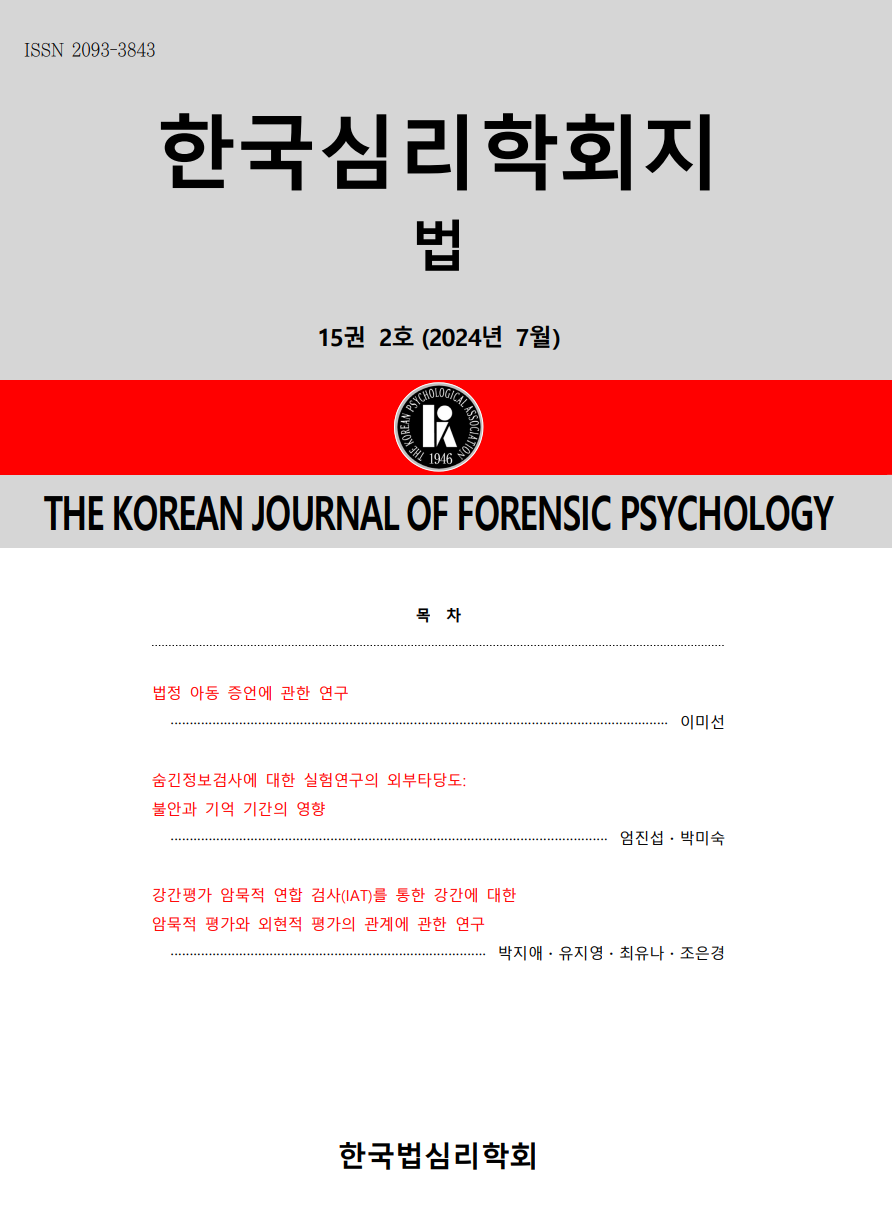open access
메뉴
open access
메뉴 ISSN : 2093-3843
ISSN : 2093-3843
In a criminal trial, the defendant is found guilty only when the prosecution proves the guilt beyond a reasonable doubt. Current study aims to understand how judges form the belief that a defendant is guilty beyond a reasonable doubt. In order to understand the factors influencing the formation of the belief in the defendant's guilt and the ways in which those factors are applied to the case, the rulings of 28 criminal cases for which‘beyond a reasonable doubt' standard was the primary reason for reversal of the original judgment were subjected to content analysis. Several factors that tend to be influenced by the subjectivity of the judge caused the discrepancy between the courts' decisions: The veracity of statements made by the defendant or the victim, the probative value and admissibility of evidence, and the scientific evidence presented by an expert. It was also found that the judges considered the consistency of those factors with other evidence comprehensively so as to make decisions whether the overall evidence in the case in hand would be strong enough to prove the defendant's guilt beyond a reasonable doubt. In discussion, the remedies, which would decrease the inconsistency between judges' assessments of the factors that identified in this study so that minimize the impact of judge's subjectivity in applying the standard to the cases were proposed.
김상준, 안정호, & 박광배 (2013). 유죄결정 기준에 관한 실증과학적 접근. 한국심리학회지: 법정, 4(2), 83-105.
김종률 (2010). 합리적 심증과 과학적 사실인정. 형사법의 신동향 통권, (26).
대법원 (1993). 92도3327.
대법원 (1999). 99도3273.
대법원 (2000). 2000도3307.
대법원 (2000). 99도5350.
대법원 (2000). 2000도3507.
대법원 (2003). 2002도6110.
대법원 (2004). 2004도2221.
대법원 (2006). 2005도8675.
대법원 (2010). 2010도8153.
대법원 (2010). 2010도9633.
대법원 (2011). 2010도5962.
부산지방법원 (2000). 99노2012.
부산고등법원 (2005). 2004노403.
서울고등법원 (1990). 90노3054.
서울고등법원 (1999). 99노1956.
서울지방법원 (1999). 98노11641.
서울고등법원 (2000). 2000노706.
서울고등법원 (2001). 2001노908.
서울고등법원 (2002). 2002노2060
서울고등법원 (2010). 2010노931.
서울남부지방법원 (2010). 2009노1742.
울산지방법원 (2004). 2004고합6.
이병태 (2011). NEW 법률용어사전. 법문북스
인천지방법원 (1999). 98고단8335.
인천지방법원 (1999). 99노1134.
Arntzen, F. (1970). Psychologie der Zeugenaussage. Gottingen: Hogrefe.
Horowitz, I. A., & Kirkpatrick, L. C. (1996). A concept in search of a definition: The effects of reasonable doubt instructions on certainty of guilt standards and jury verdicts. Law and Human Behavior, 20(6), 655.
Kagehiro, D. K., & Stanton, W. C. (1985). Legal vs. quantified definitions of standards of proof. Law and Human Behavior, 9(2), 159.
Martin, A. W., & Schum, D. A. (1987). Quantifying burdens of proof: A likelihood ratio approach. Jurimetrics Journal, 27, 383.
McCauliff, C. M. (1982). Burdens of proof:Degrees of belief, quanta of evidence, or constitutional guarantees. Vanderbilt Law Review, 35, 1293.
Pennington, N., & Hastie, R. (1992). Explaining the evidence: Tests of the Story Model for juror decision making. Journal of personality and social psychology, 62(2), 189.
Simon, R. J., & Mahan, L. (1971). Quantifying Burdens of Proof. Law and Society Review, 5, 319.
Steller, M. (1989). Recent developments in statement analysis. In J. C. Yuille (1989). Credibility assessment (pp. 135-154). Deventer, The Netherlands: Kluwer.